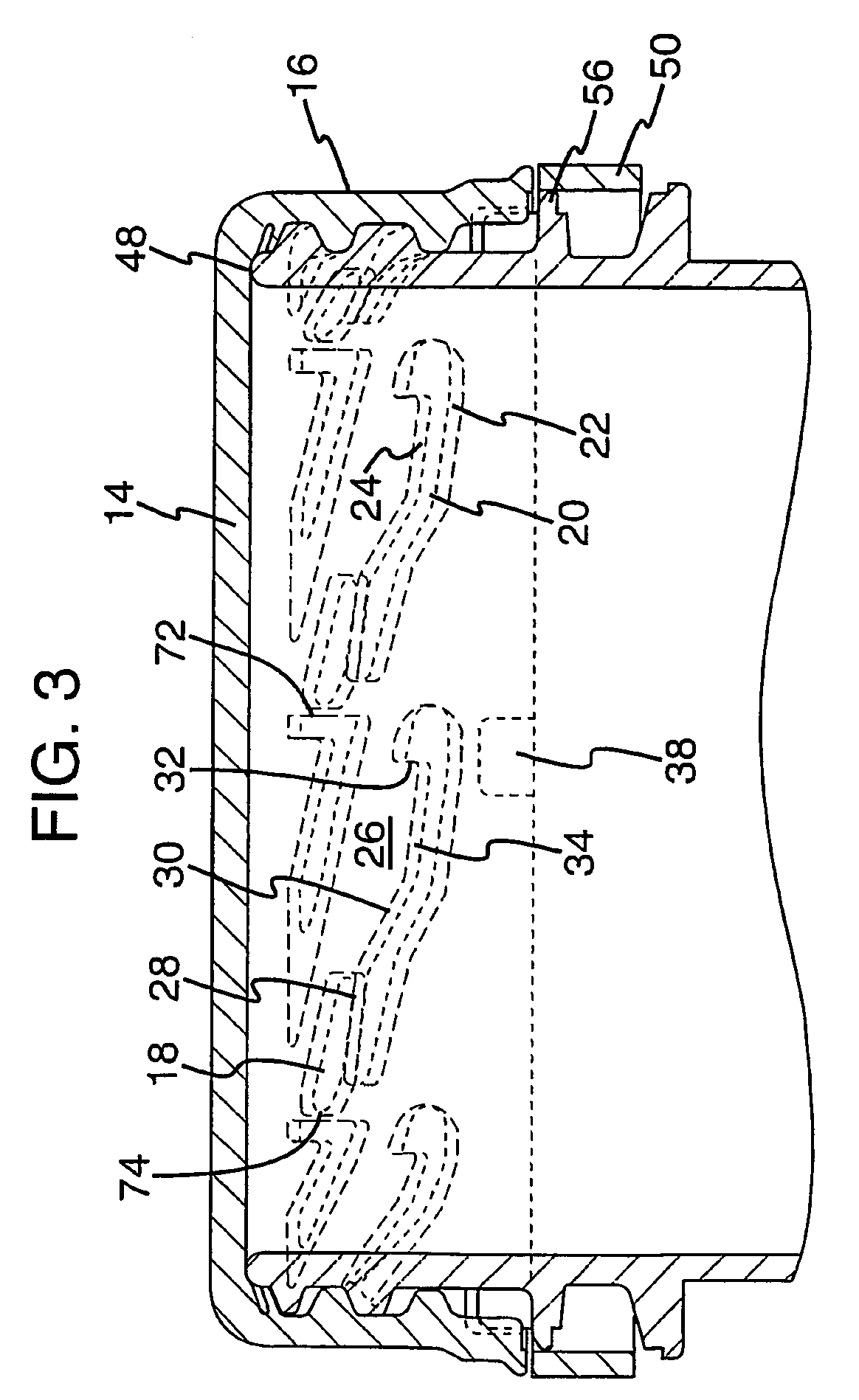Closure assembly for a wide mouth vessel
a wide mouth vessel and closure assembly technology, applied in the direction of closures using caps, caps, applications, etc., can solve the problems of unreliable separation of tamper-evident rings from the closure skirt, laborious rotation required to remove and secure the closure, and excessive use of molding materials, so as to improve the user-friendliness increase the radius of curvature, and improve the effect of the opening thread finish
- Summary
- Abstract
- Description
- Claims
- Application Information
AI Technical Summary
Benefits of technology
Problems solved by technology
Method used
Image
Examples
Embodiment Construction
[0056]Referring to FIGS. 1 and 2, this embodiment is a drinking vessel 1 in the shape of a drinking glass having a base 2 of diameter about 5 cm and a top 3 of internal diameter about 7 cm and a tubular body 4 of circular cross-section. The aesthetic and practical appeal of such a liquid packaging format is clear, but it has not hitherto been possible to make a reliable closure assembly for such wide-mouth containers.
[0057]The main features of this assembly resemble those of the assembly described and claimed in our International Patent Applications WO95 / 05322 and WO97 / 21602 and WO99 / 19228, the entire contents of which are expressly incorporated herein by reference. However, it is important to note that the threads on the closure and the vessel opening are reversed in the present invention relative to the closure assemblies described in those applications. That is to say, the earlier patent specifications describe in detail assemblies having short thread segments in the closure skir...
PUM
 Login to View More
Login to View More Abstract
Description
Claims
Application Information
 Login to View More
Login to View More - R&D
- Intellectual Property
- Life Sciences
- Materials
- Tech Scout
- Unparalleled Data Quality
- Higher Quality Content
- 60% Fewer Hallucinations
Browse by: Latest US Patents, China's latest patents, Technical Efficacy Thesaurus, Application Domain, Technology Topic, Popular Technical Reports.
© 2025 PatSnap. All rights reserved.Legal|Privacy policy|Modern Slavery Act Transparency Statement|Sitemap|About US| Contact US: help@patsnap.com



